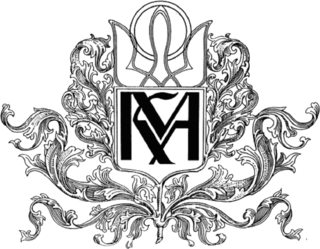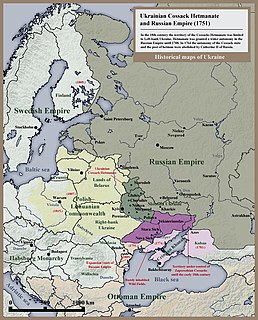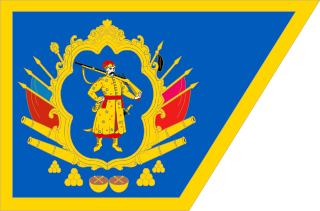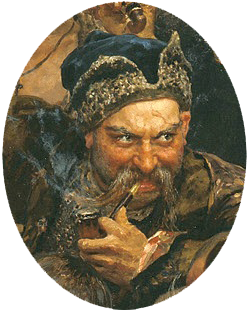Biography
Pavlo Holovaty was born in Kiev and educated together with his younger brother at the Kyiv-Mohyla Academy.

Kiev or Kyiv is the capital and most populous city of Ukraine, located in the north-central part of the country on the Dnieper. The population in July 2015 was 2,887,974, making Kiev the 7th most populous city in Europe.

National University of Kyiv-Mohyla Academy (NaUKMA) is a national, coeducational research university located in Kiev, Ukraine. The Kyiv-Mohyla Academy, the school's predecessor, was established in 1615. The NaUKMA is located on the Academy's grounds in the ancient Podil neighborhood. In 1991, it was re-organized, and teaching began the following year. NaUKMA has the highest level of accreditation as outlined by the Ministry of Education and Science of Ukraine, and is one of the thirteen educational institutions in Ukraine having a status of a research and autonomous university. NaUKMA takes part in numerous international university collaborations, such as the European University Association. The university is bilingual in Ukrainian and English. It is one of Ukraine’s few universities with internationally recognized diplomas.
With the destruction of the Zaporozhian Sich in 1775, many of the more senior Cossacks were repressed by the Russian government. Pavlo was one of those arrested with the last Zaporozhian koshovy Petro Kalnyshevsky. Both Holovaty and Kalnyshevsky spent a year incarcerated in Moscow, and were given death sentences which were later commuted to lifetime incarceration. [1]

Petro Kalnyshevsky was the last Koshovyi Otaman of the Zaporozhian Host, serving in 1762 and from 1765 to 1775. Kalnyshevsky was a hero in the Russo-Turkish War of 1768–1774 for which he was awarded with the gold medal of the order of St.Andrew with diamonds for courage and the rank of lieutenant-general.
He was sent to Toblosk and incarcerated at the Znamensky monastery until his death. [2]
This page is based on this
Wikipedia article Text is available under the
CC BY-SA 4.0 license; additional terms may apply.
Images, videos and audio are available under their respective licenses.

Cossacks were a group of predominantly East Slavic-speaking people who became known as members of democratic, self-governing, semi-military communities, predominantly located in Eastern and Southern Ukraine and in Southern Russia. They inhabited sparsely populated areas and islands in the lower Dnieper, Don, Terek and Ural river basins and played an important role in the historical and cultural development of both Ukraine and Russia.

The Zaporozhian Cossacks, Zaporozhian Cossack Army, Zaporozhian Host or simply Zaporozhians were Cossacks who lived beyond the rapids of the Dnieper River, the land also known under the historical term Wild Fields in today's Central Ukraine. Today much of its territory is flooded by the waters of Kakhovka Reservoir.

Hetman of Zaporizhian Cossacks is a historical term that has multiple meanings.

The Zaporozhian Sich was a semi-autonomous polity and proto-state of Cossacks in the 16th to 18th centuries, centred in the region around today's Kakhovka Reservoir and spanning the lower Dnieper river in Ukraine. In different periods the area came under the sovereignty of the Polish-Lithuanian Commonwealth, the Ottoman Empire, the Tsardom of Russia, and the Russian Empire.

Zaporizhia is a historical region in central Ukraine below the Dnieper River rapids - hence the name, literally "(territory) beyond the rapids".

The Cossack Hetmanate, officially known as the Zaporizhian Host, was a Ukrainian Cossack host in Central Ukraine between 1649 and 1764.

Maksym Zalizniak was a Zaporizhian Cossack and leader of the Koliivshchyna rebellion.

Kosh otaman was a chief officer of the Kosh of the Zaporozhian Host in the 16th through 18th centuries.

Khortytsia is the largest island in the River Dnieper, and is 12.5 kilometres long and up to 2.5 kilometres wide. The island forms part of the Khortytsya National Park. This historic site is located within the city limits of Zaporizhia, Ukraine.

Ivan Sirko was a Ukrainian Cossack military leader, Koshovyi Otaman of the Zaporozhian Host and putative co-author of the famous semi-legendary Reply of the Zaporozhian Cossacks that inspired a major painting by the 19th-century artist Ilya Repin.

The Danubian Sich was an organization of the part of former Zaporozhian Cossacks who settled in the territory of the Ottoman Empire after their previous host was disbanded and the Zaporizhian Sich was destroyed.

Adrian Kashchenko was a well-known Ukrainian writer, historian of Zaporozhian Cossacks.

Ivan Briukhovetsky was a hetman of Left-bank Ukraine from 1663 to 1668. In the early years of rule his was positioned as pro-Russian policies incited a rebellion which he later joined in an attempt to salvage his reputation and authority. Later leader of the Anti-Moscow uprising. His assessments as a rule differ in the part of Ukrainian historians which are supporters Petro Doroshenko.

Antin Holovaty or Anton Golovaty ; between 1732 and 1744 – January 28, 1797 was a prominent Zaporozhian Cossack leader who after the Zaporozhian Sich's destruction was a key figure in the formation of the Black Sea Cossack Host and their later resettlement to the Kuban Region of Russia.

Of the different branches of Cossacks, the only one that documents allowing Jews into their society were the Cossacks of Ukraine.

Zakhary Oleksiyovych Chepiha, sometimes transliterated Chepiga, alternative surname: Kulish was, after Sydir Bily, the second Kosh ataman of the Black Sea Cossack Host.

Sidor Bely or Sydir Bily — Kosh ataman of the Black Sea Cossack Host.

Peter Tekeli (1720–1792) was a Russian general-in-chief of Serb origin. He achieved the highest rank among the Serbs who served in the Imperial Russian Army. He was born in a noble family of military tradition, whose men were officers of the Austrian army in the Military Frontier. Prior to his emigration to Russia in 1748, he fought as a young officer in the War of the Austrian Succession. Characterized by both courage and military cunning, he made a splendid career in Russia. He participated in the Seven Years' War, the first Russo-Turkish War (1768–1774), and the second Russo-Turkish War (1787–1792). Under his command, Zaporozhian Cossacks were disbanded and subjugated to the Imperial authority in 1775, without spilling a single drop of blood, for which he received the Order of St. Alexander Nevsky from Empress Catherine the Great. He retired in 1790, and died two years later in his mansion at Novomirgorod.

Kost Hordiyenko was a Zaporozhian Cossack Kosh otaman. After 1709 he allied with Ivan Mazepa, and co-authored the Constitution of Pylyp Orlyk.



















